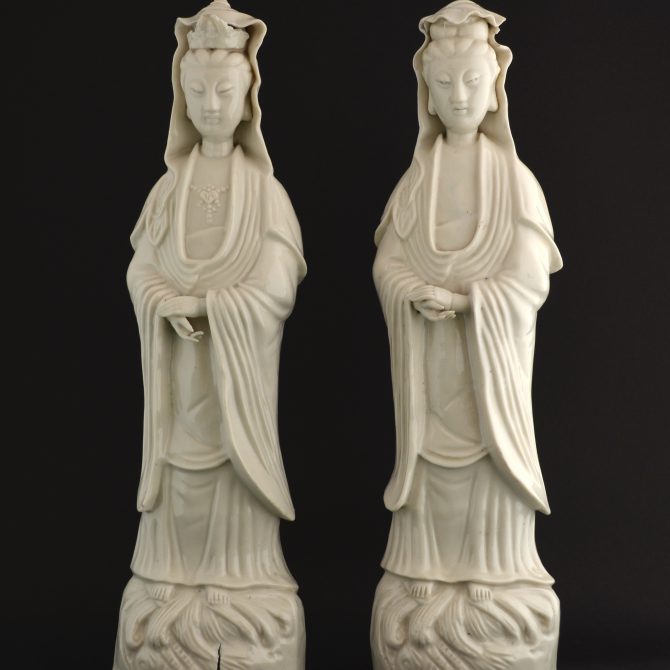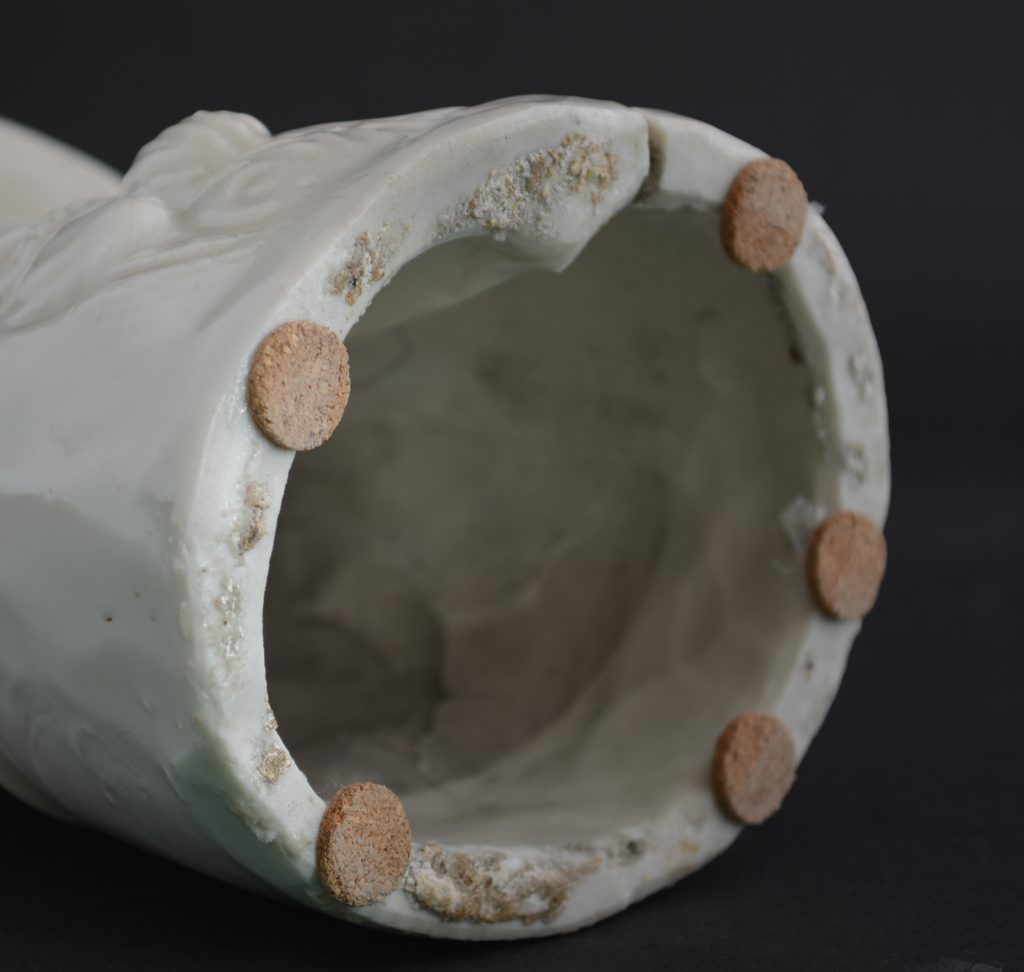
KANGXI 1662 – 1722 Blanc de Chine Porcelain
A Pair of Large Kangxi Blanc de Chine Porcelain Models of Standing Guanyin, Dehua Kilns, Fujian Province, Kangxi 1662-1722.
SOLD
- Condition
- The Guanyin on the Left ; One hand restored (replaced) the tip of one finger repaired, a small chip to the top of her crown, small chips to the cowl draped over her head. Firing crack to the base The Guanyin on the Right ; A large chip to the edge of her cowl on the right of her head.
- Size
- Height : 41 cm (16 inches)
- Provenance
- R and G McPherson Antiques. A Private English Collection of Chinese Ceramics.
- Stock number
- 23486
- References
- For another `pair` of Kangxi Guanyin very similar to the present pair see our `Sold Items` number 19286. This pair had even more differences between the two figures.
Information
It is possible that these blanc de chine figures did not start life together, there are some differences between the two figures, for example one has a tiara type crown while the other does not. Blanc de chine figures like the present example were constructed of separate pieces put together. The idea of identical pairs is a relatively modern one, it is something we have become used to through the process of standardization through modern mass production techniques. Differences in pairs or sets are common among 17th and 18th century Chinese. The faces and front of the figures seem to be produced from the same mould, they just have different applied decoration.
Blanc de Chine Guanyin Figures :
Figures of Guanyin are by far the most common of all Blanc de Chine figures and indeed one of the most common images in Chinese figurative art. Guanyin was the Goddess of mercy, She was especially revered in the area where this figure was produced ; Dehua in Fujian Province. But her origins stem from Tibetan Buddhism, she was originally the patron saint of Tibetan Buddhism `Avalokitesvara`. Blanc de chine figures like the present example were constructed of separate pieces put together, this was a standard technique at the Blanc de Chine kilns in Dehua, it explains the huge variation of seemingly similar objects produced at the kilns. Figures from the Ming dynasty show a far greater degree of hand-modelling, with folds of material, the face, as well as fingers cut by hand. The potting tends to be thicker too, the interior space often shows cutting marks where the excess leather-hard clay was removed. The models of Guanyin from the Kangxi period (1662-1722) appear much more obviously mould-made, the modelling is normally more shallow with less definition and less hand-tooling. The interior wall often shows numerous small finger marks where the potter has pushed the clay into the mould. These figures, especially the taller ones frequently have ridges of porcelain supporting the interior moulded walls, they are pinched to form a ridge which is triangular in cross-section.
Blanc de Chine Porcelain :
The porcelain known in the West as Blanc de Chine was produced 300 miles south of the main Chinese kiln complex of Jingdezhen. The term refers to the fine grain white porcelain made at the kilns situated near Dehua in the coastal province of Fujian, these kilns also produced other types of porcelain. A rather freely painted blue and white ware, porcelain with brightly coloured `Swatow` type enamels as well as pieces with a brown iron-rich glaze. However it is the white blanc de Chine wares that have made these kilns famous. The quality and colour achieved by the Dehua potters was partly due to the local porcelain stone, it was unusually pure and was used without kaolin being added. This, combined with a low iron content and other chemical factors within the body as well as the glaze, enabled the potters to produce superb ivory-white porcelain.







